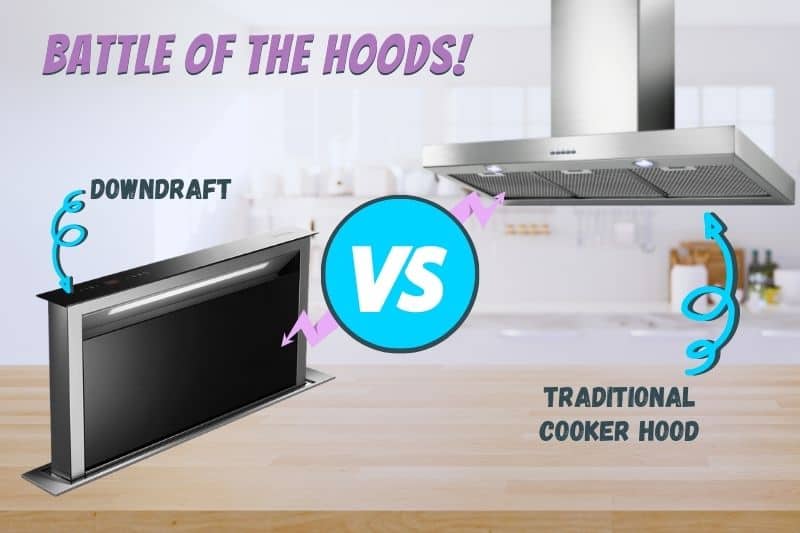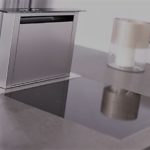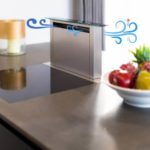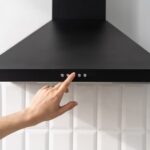Are you finding that things are getting somewhat steamy in your kitchen, and not in a good way?! Are you trying to find out which is better—a downdraft extractor or a traditional extraction hood?
Allow us to help.
But first of all, what is the difference between the two?
Well, a downdraft extractor is a cooker hood that’s attachable to the kitchen countertop behind or above a hob. When being used, they rise out of the work surface and extract the air over the hob.
Downdraft extractors are typically used above kitchen islands, but can be fitted above a wall-side hob. The downdraft extractor can then be tucked away when not in use.
A hood is the canopy you see protruding above most cookers. They have a built-in fan mechanism and often provide light above your hob.
The Pros & Cons or a Downdraft Extractor
Pros
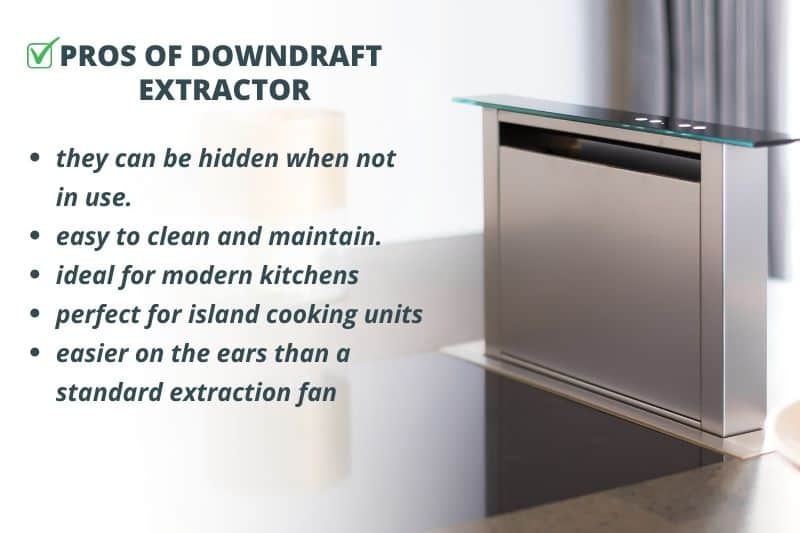
- They can be hidden when not in use.
- Easy to clean and maintain.
- Ideal for modern, minimalist kitchen designs
- Perfect for island cooking units
- Easier on the ears than a standard extraction fan
- Absorbent of fumes, steam, grease, and cooking smells
- Designed to be sleek and discrete
Cons
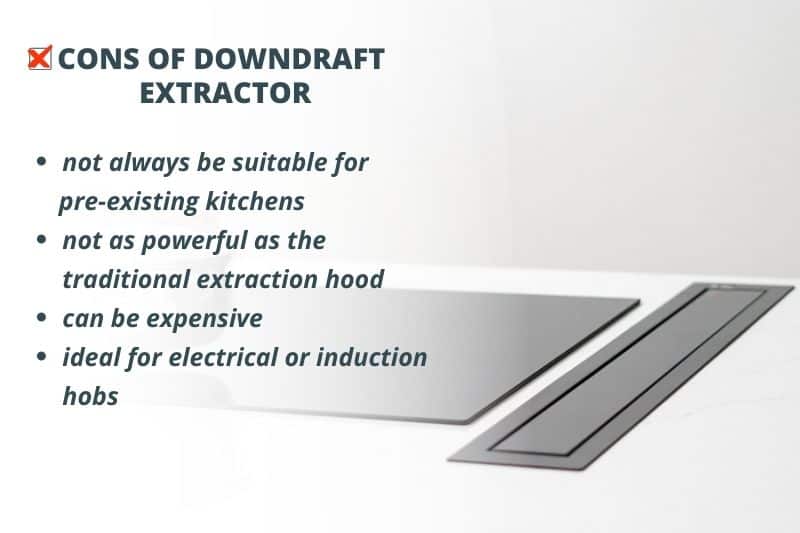
- Will not always be suitable for pre-existing kitchens
- Often not as powerful as the traditional extraction hood
- Can be expensive
- Can take up storage space when not in use
- Does not absorb steam or grease from the front hob rings as well as it does from the back two
- Ideal for electrical or induction hobs, but not so much for gas as they will draw the flame upwards and can cause uneven distribution of heat in your pans
The Pros & Cons of a Traditional Extraction Hood
Pros

- Reliable and even steam, odour, and grease absorption
- Ideal for humidity control
- Protects the paintwork and plaster of surrounding walls and ceiling
- Often comes with a built-in light
- Increases your property value
- Cheaper to purchase than a Downdraft
Cons
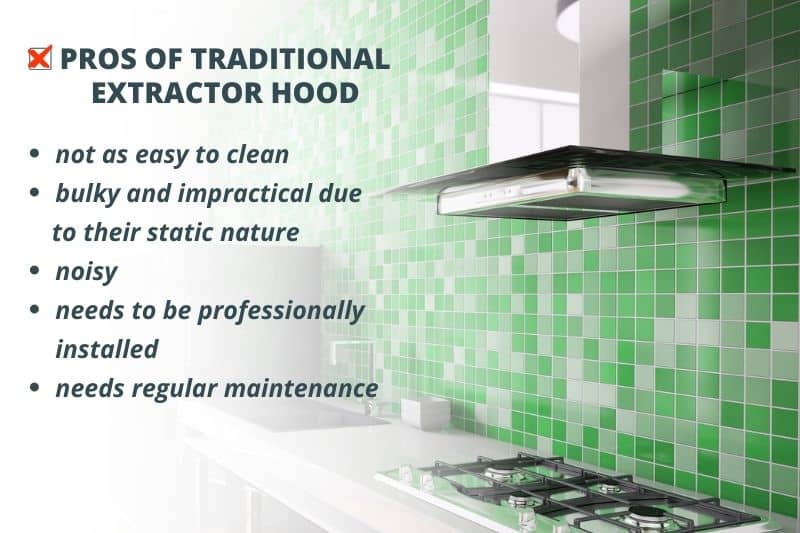
- Not as easy to clean
- Bulky and impractical due to their static nature
- Noisy
- Needs to be professionally installed
- Needs regular maintenance
- Can be a nuisance for the tall chef/cook!
Our Verdict
Both types have their selling features and their banes, so the jury’s out on which is best. It all depends on your kitchen design, your needs, and your personal preferences!

Clara is a freelance writer and former chef. Though she may have hung up her apron, her love of food and cooking is still going strong! When she’s not whipping up a verbal storm, she’ll be in her kitchen sipping wine and whipping up a culinary storm.

